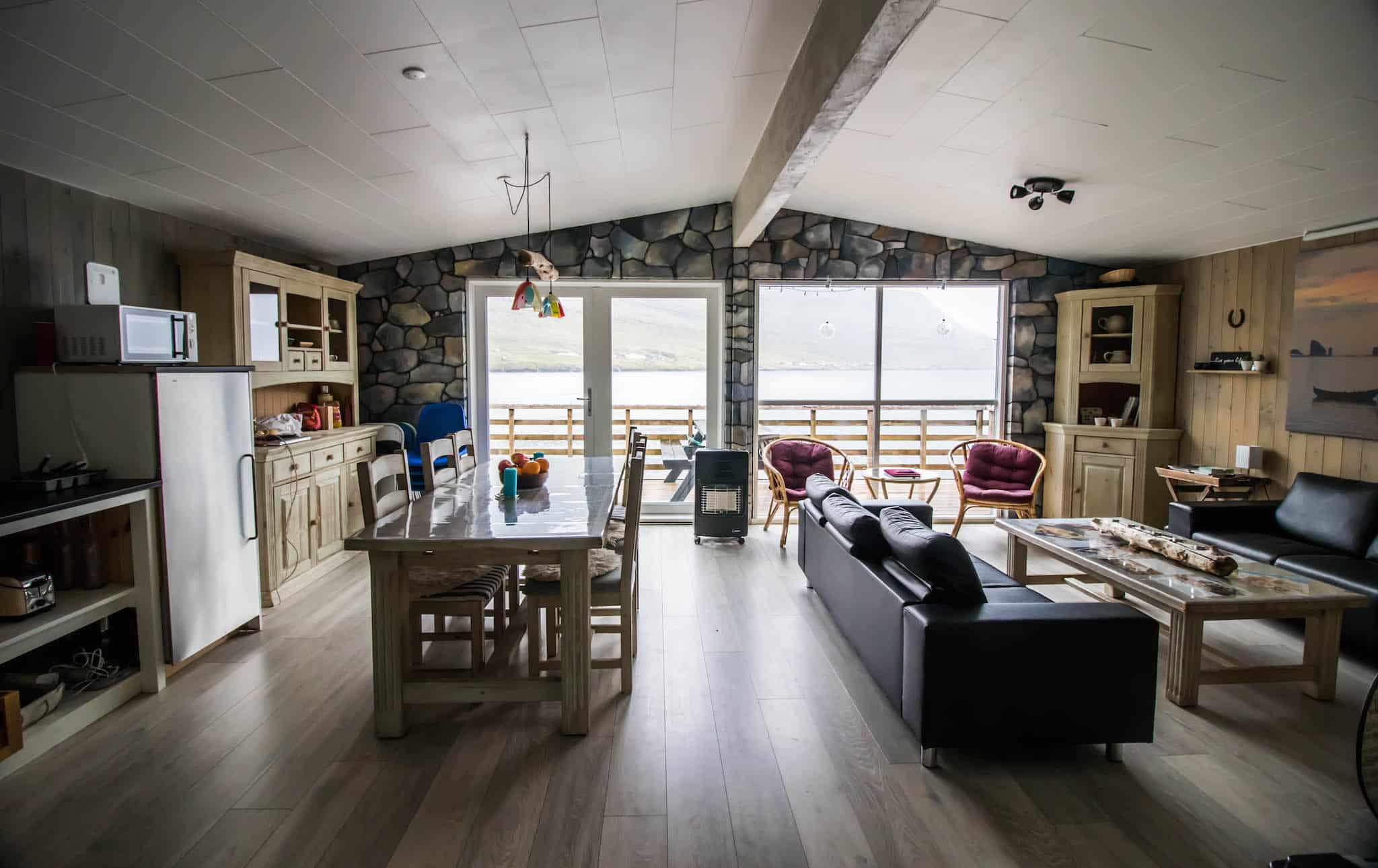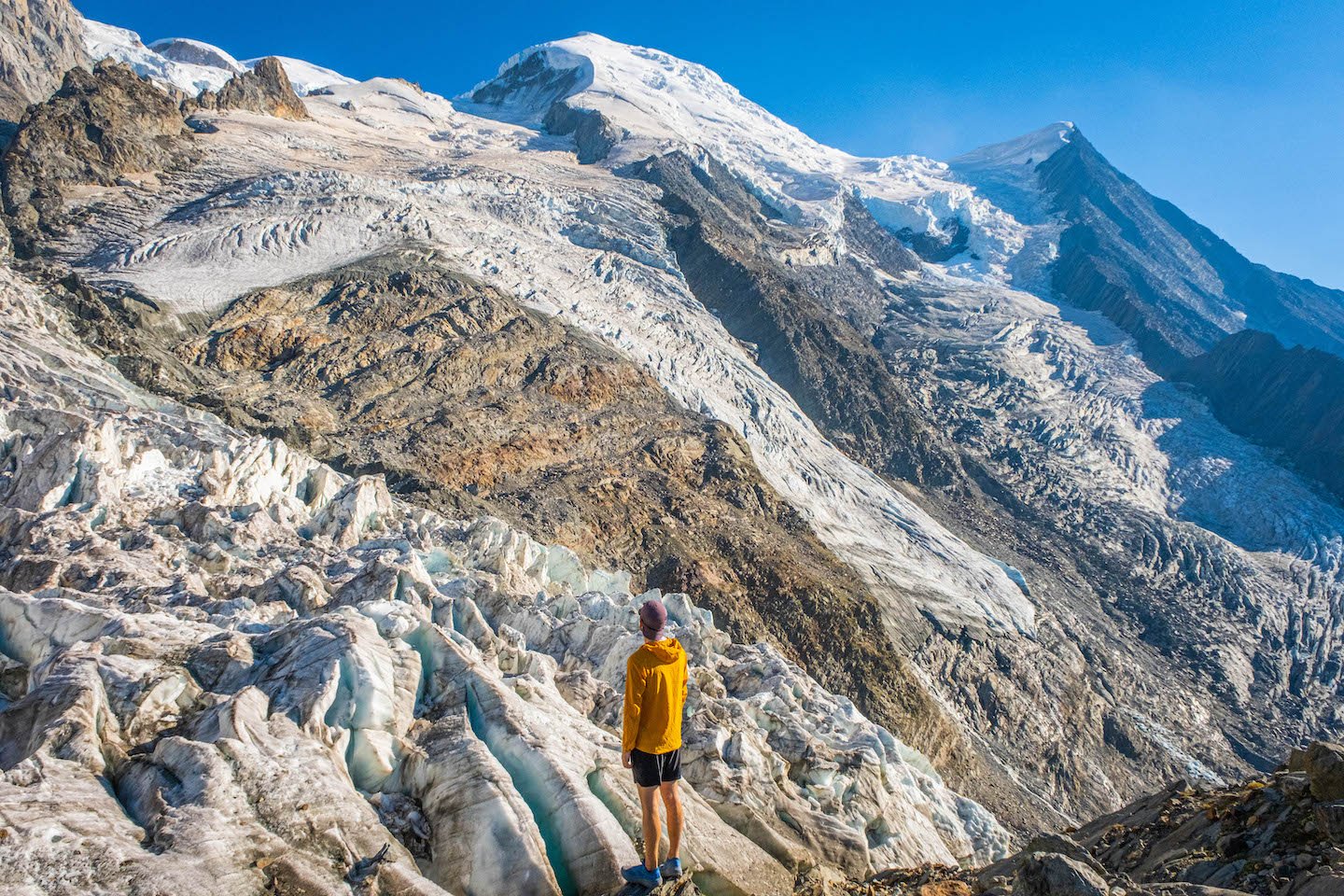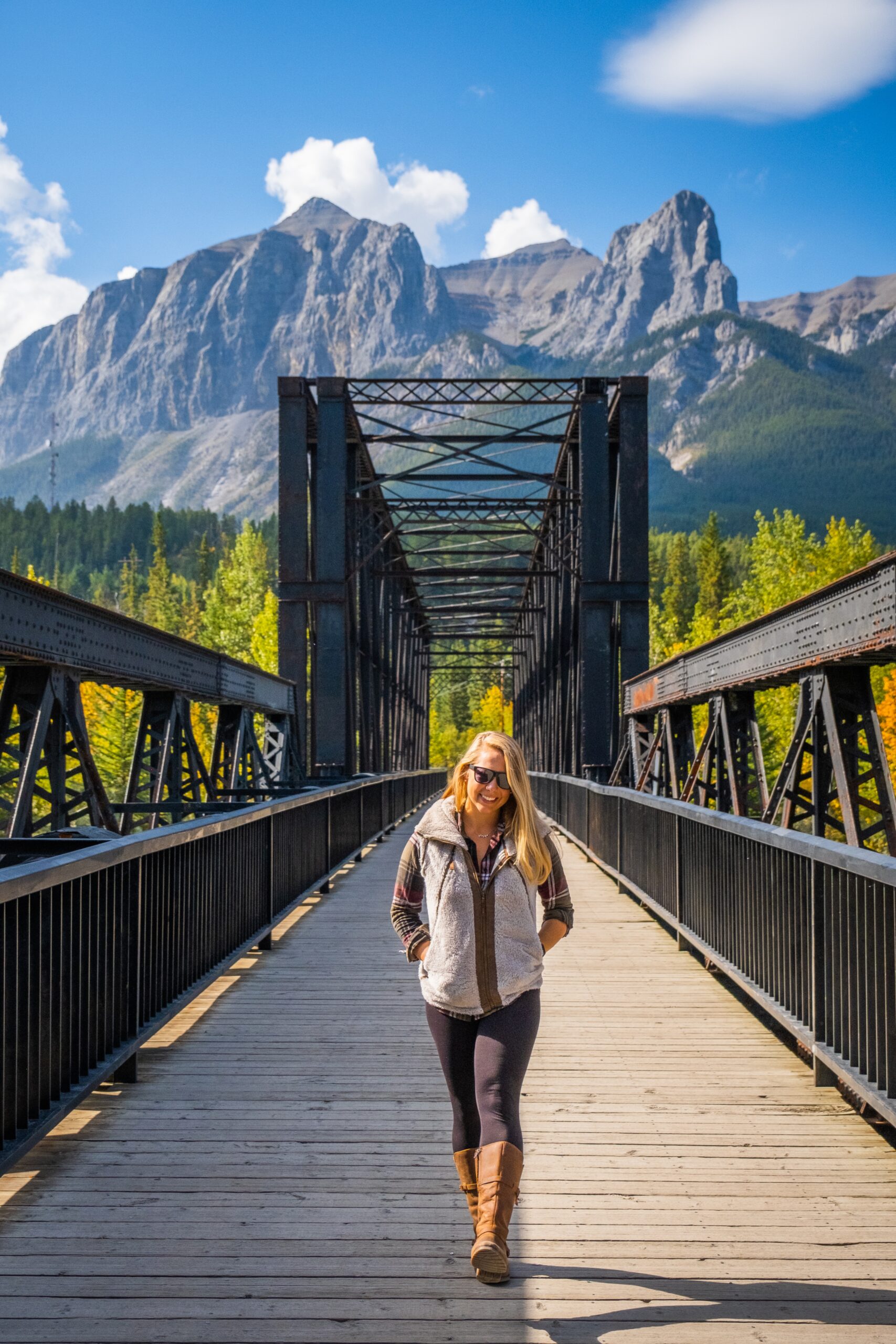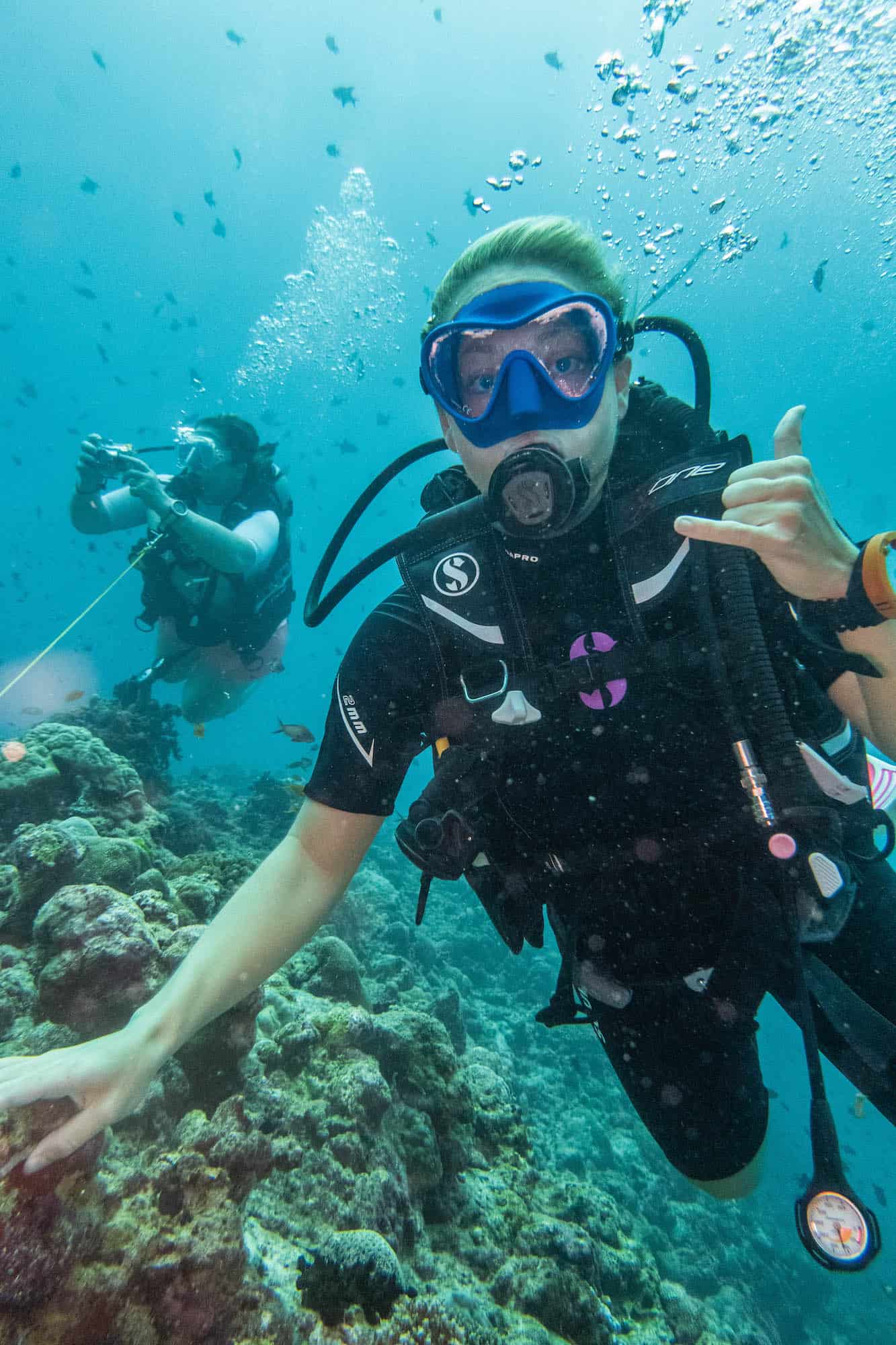How We Live a Fun Life of Travel • Inside a Travel Bloggers Life

As two people without permanent homes and always on the go from country to country, we’re often asked how we live a life of travel. This covers the everyday nuances of life and how we cope with long-term travel. It’s not a complicated ordeal, and we take almost everything day by day. If you want to learn more about our lives of travel and how it can help with your travels, read on.
How Do We Live a Fun Life of Travel?
Packing

Packing for long-term travel is a drag, but that has been our life for the past four years, so it’s just something we have learned to deal with. You would think that after packing for 70 countries, I would be a great packer, but I’m not. I’m not a bad packer either—I’m just an okay packer.
We’ve used two packing strategies: one with a backpack and the other with a suitcase. Both have advantages and disadvantages. Truth be told, we both travel with suitcases these days as it feels more professional, and we find we’re aging out of the backpacker mindset. That being said, it’s still great for the right kind of trip. We’ve now started to travel to select destinations with weatherproof duffel bags.
When we travel with backpacks, I fit everything I need into my main backpack and carry a separate day bag for my electronics and valuables. My daypack always stays on me while riding on buses, trains, and planes. It was our most important bag, and I would never take my eyes off it. We now love to use a backpack or suitcase for more adventurous trips like island hopping in Indonesia, snowboarding in the Alps, or traveling around Africa.

Last year, we switched to suitcases to travel around Europe. Rolling a bag along sidewalks made life a lot easier than carrying a backpack. The suitcase also allows me to pack nicer clothes, like cute dresses, real bras, and more than a pair of hiking shoes. It keeps my belongings more organized, fits more things, and helps me not look like…well, a backpacker.
Personally, I like to have a backpack if I am moving more and traveling by public transport. If I am basing myself at apartments around the world and traveling mostly with my own rental car then I like to have a suitcase. My suitcase saved me this winter as all the clothes I needed were obviously fluffier and bulkier than summertime clothing. Having the suitcase allowed me to have more sweaters and boots.
Laundry

Besides packing, most people ask us how we keep up with laundry. Laundry is something we hate thinking about when we travel. It’s always a pain, hassle, inconvenient, and hardly ever easy. It’s not like hotel laundromat pricing is practical for anyone. $8.00 for a pair of socks? No, thank you! Can you tell I hate doing laundry while traveling? We typically have to do our laundry every two weeks. When we were in Costa Rica, it was hot and humid, and we wanted to get it done sooner. In the winter, we can go much longer since we do not sweat in our clothes and can often wear items multiple times. Humidity is not your friend when it comes to laundry.
When we know we must do laundry, we always try to book an Airbnb with a washer. They have a filter where you can select only to see properties with this feature. In North America, I often find that many corporate hotels (Marriott or Double Tree) will have washer/dryer units you can pay to use, and we never hesitate to do a load when this is available. Laundry services are cheap throughout Southeast Asia, and we can often get all our clothes washed, dried, and folded for $5-$10. Throughout Africa, we would seek out local women to wash, hang dry, and iron our clothes for $5-$10.
Flights

Believe it or not, the majority of places we travel to are a result of finding a good flight deal. Generally, we will choose a region we know we want to travel to and set out for the best deal. I’ve been using Skyscanner’s “everywhere” feature for years. I type in my starting location, and then for the destination, I put “everywhere” and pick a whole month that I want to travel. Skyscanner will then show me countries that are the cheapest to travel to and which date is best. It’s amazing the deals you can find if you’re flexible.
Other flight engines we look at are Google Flights, Chase Ultimate Rewards, and I am signed up with Secret Flying. Secret Flying sends me flight error prices right to my inbox, but they can get spammy and send too many emails really fast so be careful when signing up. This year, we’ve been using Google Flights more and more and love its powerful features, such as exploring flight prices by map. We’ve gone to the Seychelles, Latvia, Costa Rica, and Bali simply because we found flight offers too good to refuse.
Car Rentals

When we are not taking public transport, we rent a car. It’s our preferred way to travel around Africa, North America, Australia, and Europe. Since the two of us often share the cost and driving responsibility, it usually makes more sense to rent. In North America, parts of Africa, and Australia, having a car is the only way to get from point A to point B. Around Europe and Asia, the infrastructure is well-suited for trains and buses. We’ve reached a point in our travels where we are willing to pay for the convenience of having our own set of wheels.
Accommodation

When we were younger and more carefree, we stayed at hostels. Hostels are a great way to meet people when you travel and save money by booking out space in a room rather than a full bedroom. It’s cheap and can be a lot of fun. However, we’ve grown older and cherish our space and privacy more than when we were 22. I still think they are great. If we stay for more than three days at a destination, we will first look to see what we can find on Airbnb.
I like having my own kitchen and feeling like I’m at a home rather than a hotel room. Plus, most Airbnb’s have their own private WiFi network, meaning we can work more efficiently than in a hotel where everyone’s eating up the bandwidth. When Airbnb isn’t an option we turn to hotels. Call us boujee but we don’t book places that have a review score below an 8 on Booking.com. Our general budget is $60-80 per night a private room – so $30+ a person. In certain places like New York, Edinburgh, and Dublin we’ve paid a lot more than that. In Southeast Asia or the Balkans we’ve paid a lot less.
Cell Phones

Another question we always get is on our phone bill. Verizon (a major company in the US) must be charging us a ton for roaming, right? Wrong. While we both have smartphones, we don’t have a plan in the US since we are never there. We get local SIM cards everywhere we go, make calls, and use 4G off that.
For those who don’t know, all cell phones have a tiny slot on the side for SIM cards. This connects you to your telecom companies like Verizon, AT&T, Vodafone, etc. This little sim card can pop in and out. Every time we land in a new country, we purchase a SIM card and data minutes, which is how we stay connected. If we aren’t staying somewhere that long, we may not even bother trying to get a SIM card and simply stay connected via WiFi. SIM cards are available in every country and are typically very inexpensive.
They’ve helped us make calls and do business throughout Africa, Asia, and Europe. SIM cards can usually be bought at the airport when you arrive, but you will pay a higher price for the convenience. Once you leave the airport, look for cell phone providers in city centers and malls. If you don’t feel confident about getting a SIM card, you can always look into portable wireless hotspots before you leave for your trip.
Our Belongings

It may or may not surprise you that for a long time we did not have many belongings. We sold our cars years ago, didn’t have a home, and sold all our furniture in New York. We find the less stuff you own the more relieving life is. Our tubs of clothes and a few other knick-knacks lived in our parent’s attics.
However, after years of traveling without a home, we did purchase a base in the Canadian Rockies. It was a huge change for us and allowed us to pursue our business interests, hobbies, and health. With age, we came to find that while things to do not make you happy, certain things that allow for hobbies definitely bring happiness, like a bike, snowboard, or climbing gear.
Hobbies

This is one of those things that we had almost completely given up to travel. When we left New York we gave up things like working out, gym and class memberships, and sports. Travel quickly became our only hobby and then because traveling is our work, working on this blog became our hobby which then became our work. We felt like as if we were working around the clock – not a bad job, but still not ideal.
I suppose there could be worse jobs than traveling, but we both really like to stay active. We started implementing activities in our travels. We’ve also made a push to pick up more hobbies again, our most recent was snowboarding. We spent our winter mountain hopping our way across Europe, Japan, Canada, and the US.

I’ve been getting more and more into yoga and joining studios and fitness classes when we travel. I even have a travel yoga mat which is great for practicing on the go. Cameron’s picked up running and has found a lot of joy in exploring destinations by foot. He’s even signed up for his marathon in November so wish him luck! We both just confirmed our spot on getting dive certified in Indonesia, something that has been on the list forever. Happy to be scratching that off this year.
When we decide to settle in a more permanent base our goal is to implement ourselves more into the community and pick up more hobbies. We’re getting a lot of joy pursuing new hobbies like scuba and free diving, running, yoga, mountaineering, and more.
Friends/Family

Since we travel full time we don’t get to see our friends and family as often as we would like. We try to make it back home to Michigan and North Carolina at least once a year to enjoy time with loved ones. However, sometimes this doesn’t happen. One year we went two years without going home and that was tough for everyone and we hope to not let that happen again.
The good news is that traveling opens you up to all kinds of new people and cultures and we end up making friends wherever we are. The hardest part is saying goodbye and knowing we may never see those people again.
Health

Thankfully, we are both fortunate and in good health. We try to care for ourselves and live a healthy lifestyle by staying active and eating mostly vegan. However, accidents can happen anywhere in the world so we both travel with travel insurance. In our opinion, if you can’t afford travel insurance, you shouldn’t be traveling. Thankfully, we have never had to make a claim or even visit a doctor while on the road. Sure, we’ve gotten stomach bugs and colds a few times, but nothing life-threatening or serious.
Because we are out of the US most of the year, we don’t have primary insurance in America. We are only covered around the globe should something serious or unexpected happen. We pay out of pocket for eye exams, dental visits, and checkups, but we generally do this abroad because it is cheaper.
Seriously, it seems all medical care is cheaper outside the US, and YES, the professionals are just as good. We’ve had dental checkups in Cape Town, Portugal, Indonesia, Thailand, Costa Rica, and Mexico, and I order all my contacts online from the UK for a good price and no prescription. In Italy, I walked up to the optical store, picked up a pair of glasses, and they put in the correct lenses all in less than a day for €50.
We also made sure we were up to date on all of our shots years ago. When we traveled to Africa, we picked up malaria prevention and other types of medicine in South Africa for a fraction of what we would pay in the US. Cameron was even able to pick up his yellow fever jab for cheap at a nice private clinic in Johannesburg.
Navigation

Unlike previous generations who had to use paper maps and guidebooks to get them around new places, we are lucky enough to have the computers and the internet. We download full maps to our phone with Google Maps so that we can use it without data or WiFi.
This gives us turn by turn navigation while we are driving. ] However, it does not give us walking directions offline while we are in cities. We also use Maps.Me which helps us navigate without WiFi (this got us all around Africa).
Finances

We’ve talked a lot about how we manage finances both here and here before. But the gist of is we do all of our banking online, never use currency exchanges, pick the right travel credit cards to maximize points, and minimize foreign transaction fees. We use credit cards when we can so that we can track our expenses and also earn points for airline miles. In general, I watch our finances like a hawk. Would you believe I opened up my first credit card at 16 and have stayed pretty dedicated to tracking my spending habits since.
If you’re wondering how we afford this life of travel we now earn a full-time income off of our travel blog. It’s been a long road to this point, but we were able to do so by starting out living off our savings. We lived in New York City for a year and a half to save $25,000 each so we could travel and start this blog. It was not easy and we nearly went broke by the time we left Africa, but have since filled our bank accounts back up plus some.
Plan For Your Trip
- Protect Your Trip: We don’t travel without travel insurance, nor should you. You never know what can happen while traveling, so it’s best to be prepared. HeyMondo provides excellent short-term and long-term travel insurance plans.
- Find Cheap Flights: Sign up for Going (formerly Scotts Cheap Flights) to get notified when prices get low.
- Book a Rental Car: We use Discover Car to book all our rental cars! You can also read our top tips for renting a car abroad here.
- Travel Adapter: Make sure you find a good adapter to keep your personal electronics charged. Otherwise, you may be paying for a cheap one once you land. Purchase one here.
- Travel Backpack: We like the Nomatic Travel Backpack for our travels. Check the price here.
- Our Favorite Travel Shoes: Our answer to this question is always Allbirds! Check them out on their site!
- Get a Travel Credit Card: We travel worldwide for free because we have leveraged our spending into points. See how you can do the same with our favorite travel credit cards.


Are you no longer staying in the Canadian Rockies as your home base?
Btw, are you aware of Airalo? Way easier than buying sims in every new country.